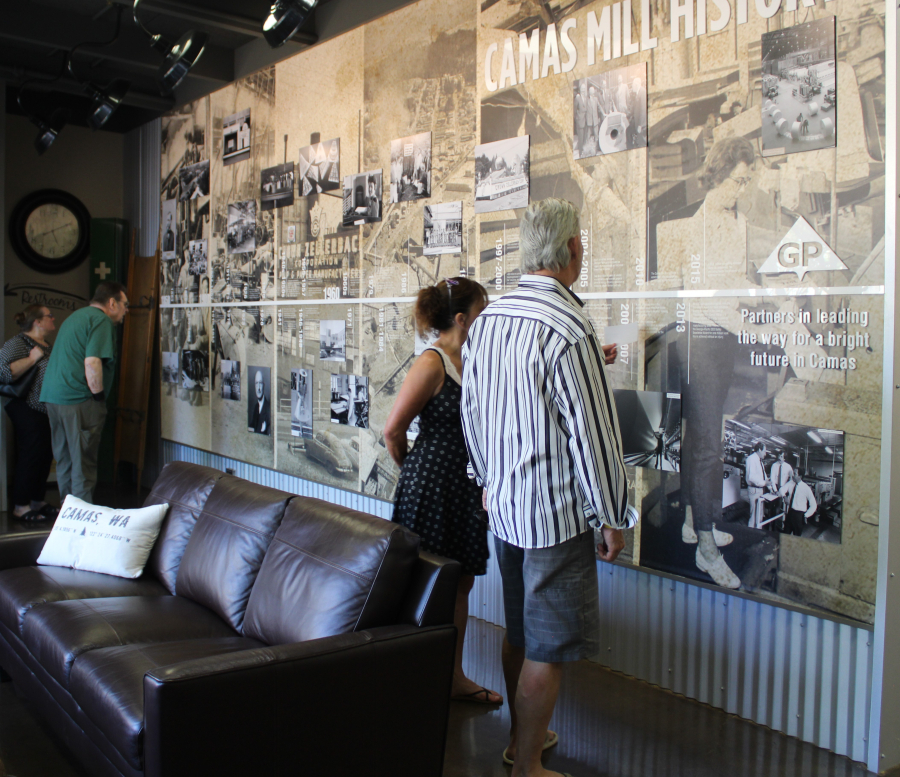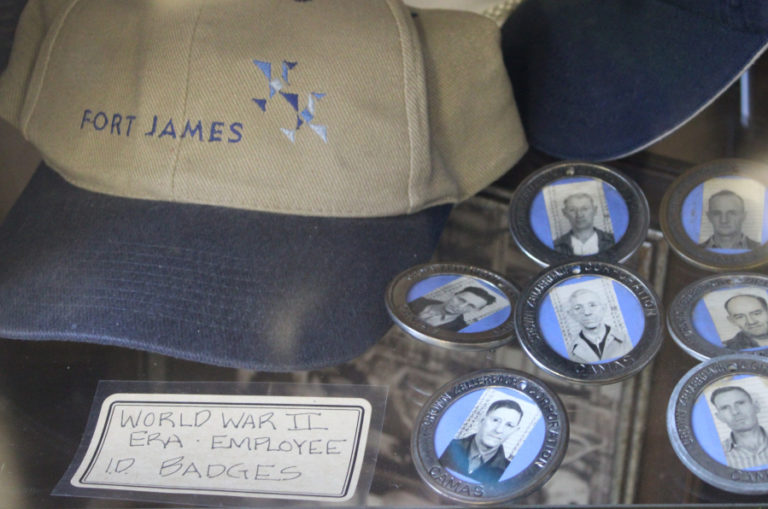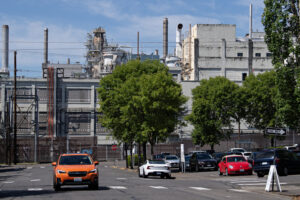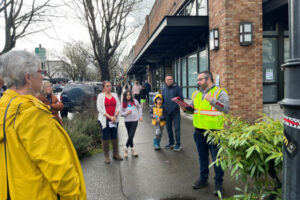Camas First Friday visitors who ventured into the Georgia-Pacific paper mill’s interpretive center on Friday, Sept. 1, were treated to a birthday party — complete with cake and free goodies celebrating the mill’s 140th birthday.
“You know, we used to be the largest specialty paper mill in the world,” Ron Hawkins, a retired mill employee and current curator of the mill’s interpretive center, told visitors Friday.
Evidence of the mill’s heyday abounds inside the interpretive center. Glass cases contain photos of workers from the 1940s and 1950s, when the mill had already stopped manufacturing its original product — newsprint — and converted into a specialty paper mill that produced bathroom and facial tissue. An entire wall of photos and text details the mill’s history, from its origin in 1883 — six years before Washington became a state — when Oregonian newspaper publisher Henry Pittock, through the LaCamas Colony Company, purchased 2,600 acres of land in what is now the city of Camas and built the mill to produce newsprint for his publication as well as several other newspapers in the region. The town of Camas literally grew up around the mill, with its downtown fanning outward from the mill’s location instead of being platted on a regular grid pattern.
According to a history of the mill available at the interpretive center, by 1885, the Camas mill was producing the first wood pulp manufactured in the Pacific Northwest. Just one year later, the mill was destroyed by a fire that caused $100,000 (about $3.25 million in 2023) in damages.
The mill was rebuilt in 1888, employed 65 people and had two paper machines. Less than 30 years later, in 1911, the mill had seven paper machines and employed 450 people, according to the mill’s historical fact sheet.






